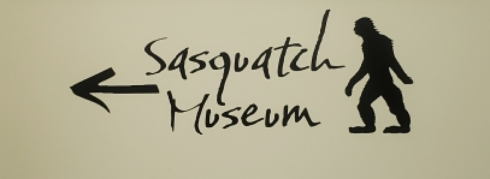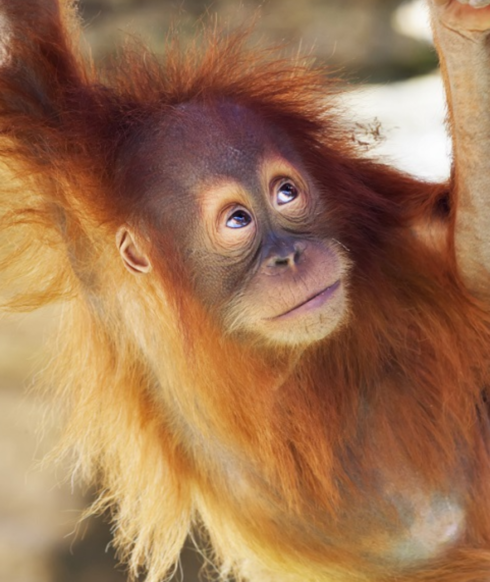Sasquatches I have known
- Sam Darling
- Dec 29, 2018
- 4 min read

In vacationing at Harrison Hot Springs with the family this holiday season I hadn’t realized we were venturing into the heart of Big Foot territory until I learned that the info center had a little “Sasquatch Museum” attached to their bungalow. I had assumed this would be a delightful trip into kitsch and looked forward to buying the kids some Big Foot-related swag. I was delighted when the visitor center even suggested they’d open the place for us since we were coming to town during a time it is normally closed! That’s a small town that knows how to cater to visitors.
As often happens to me when it comes to the reality of First Nations in the modern world, I realized this was about a lot more than tacky fun.
Kitschiness is often something cheap that is repeated so often in a motif that it can develop soul by sheer force of will. Big Foot lore is certainly that as it is everywhere in this small town. Sometimes in a form with flowing locks and intense gaze reminiscent of Jason Mamoa:


Or sometimes in its goofier child-friendly version:

I’m still learning about this part of the world and despite my secret love of cryptozoology and a general understanding that Big Foot is a thing here — why don’t we say the Pacific Southwest when we’re in Canada? — it just hadn’t twigged for me that this was a First Nations legend. The word Sasquatch is probably from a Salish word Sasq’ets, meaning “wild man” or “hairy man.” The First Nation of Harrison Hot Springs is the Sts’ailes (Chehalis). They had a special relationship with Sasq’ets and believed the wild man had the ability to move between the physical and spiritual realm. There are legends like this from pockets of isolated people all over the world. Most of the time is smacks of myth, but sometimes you actually find a “forest person” such as the urang-outang in Indonesian.

It makes me wonder if perhaps there were pockets of rare giant apes that coexisted with the First Nations people before they went extinct, perhaps even thousands of years ago. Is that less likely than the existence of mastodons or giant sloths?
The problem with Big Foot, of course, is that there’s basically no physical evidence, unlike the mastodons, and no “sightings” in recent memory except by people who tend to benefit from the legend. I’ve said before, I’m naturally a credulous person and it took many years of training to become a skeptic who takes a beat to consider evidence before diving headfirst into a story.
But still. I was thinking in terms of white men giving guided tours and speaking in hushed tones in a rain forest making us all feel like eyes were on us.
I had not expected to learn that the Sts’ailes had incorporated their forest man into seasonal dances. Is this a more modern addition to their dancing?
Modern at least for the last one hundred years as an old mask that was missing for a while only recently repatriated to their nation. Is it their Big Foot or is it a bear mask?

“After 75 years missing, a piece of Sts’ailes First Nation history has been repatriated to the community. The Sasq’uets mask disappeared from the Sts’ailes in 1939, believed to have been taken by JW Burns; the man often credited with having anglicized sasq’ets into sasquatch. Burns is rumoured to have become obsessed with the sasquatch legend while teaching at the Chehalis Indian School near Harrison Hot Springs BC.
Harrison Hot Springs and the shores of Harrison Lake have a long history of bigfoot activity and the elusive sasquatch is an important part of Sts’ailes culture. The Sts’ailes people believe that the sasquatch is the protector of the land. Because of this, a Sts’ailes man– James Leon– has spent the last 16 years of his life searching for this piece of lost history. After scouring North America, Leon discovered the mask was a little closer to home than first thought. Leon discovered that the mask was at the Vancouver Museum, and when he explained the story to museum staff they confirmed it was there.
The mask has now been returned to the Sts’ailes First Nation. Interestingly, the Sts’ailes people believe that to see the sasquatch is a great honour, and it will bestow a great gift on you.”
Harrison plays up the relationship between First Nations and this creature of legend in this tiny town, and between that and the natural hot springs, they appear to have a booming tourist trade.

Certainly, were I a giant hairy forest ape (and aren’t we all really?), I would choose a spot on a lake with a hot spring where I might float like a tea bag and regard the night sky and the snow-flecked hills around me, reflecting on in the majesty of the natural landscape.

A view of holiday lights from across the Lagoon.
A view from our hotel room at sunset.
So I’m taking the legend of Big Foot a bit more seriously now as I did many other indigenous stories that turned out to have a good practical reason for existing. My children, however:

EDIT: Was just told of this fun dance tune, The Sasquatch Funk.
https://soundcloud.com/ostwelve-productions/fourthfloor-01-sasquatchfunk



Comments